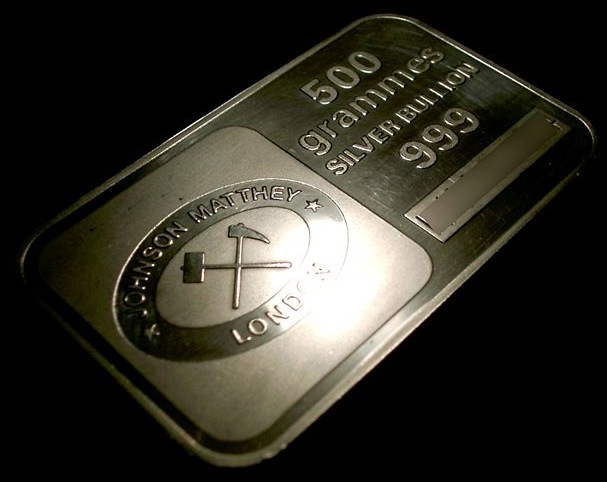Silver

Silver
bullion
Silver - overview
Silver is a soft, attractive looking metal that has been used throughout history to make jewelry, coins and decorative objects. Silver is considered one of the "precious metals" and in ancient times it was used as a form of currency. Peru is the world's greatest producer of silver. The Royal Mint in the UK made silver coins for currency up until 1946.

Silver
As with gold, silver bullion is weighed using different systems of weight in different countries. In continental Europe, silver bars are weighed and priced in grams and kilograms. In the UK and USA, silver is weighed using the troy ounce. Chinese silver bars are weighed using the tael (a unit of measurement also used for herbal medicine). In Thailand, the Baht is used (1 baht = 15.244 grams) for both precious metals and gemstones.
Silver Resources and Production
Silver is found in native form, also sometimes as an alloy with gold. It is also found in a number of minerals. However, the principal source from which silver is derived is as a by-product from copper, cupro-nickel, lead and leaz-zinc mining. Peru and Mexico are the world's greatest producers of silver. [1]
Silver Uses
Silver has an enormous range of uses in modern industry - and is considered a critical metal because there are many applications in which it has no simple substitute.
Silver has the highest electrical conductivity of any element and also the highest thermal conductivity of any metal. This means it has use in high quality electronics and is prized in high-end audio applications. Its electrical conductivity is only a little higher than that of copper - but despite the fact that it tarnishes over time, the oxides and sulphides of silver conduct almost as well as the pure metal, whereas the oxides of copper do not conduct anything like as well. Silver is used for the contacts of computer keyboards. [1]
Silver halides are used in photographic film - but the demand for this is less now that much photography is digital. In 1998, photography applications used over 30% of all the silver used in industry, whereas in 2007 it used 14.7%. Silver compounds are still used in high quality optical mirrors and for solar reflectors, although cheaper aluminium is used for common mirrors. [1]
Silver is much used in medicine. It has antibacterial, antifungal and antiviral properties without being highly toxic to humans. It is impregnated into bandages and used in catheters. [1]
Silver is also used in batteries, high conductivity solder, inks, electroplating, water purification and mold treatment. [2]
Why is silver critical?
Unlike many other metals where much of what is used industrially is often recyclable, much of the silver used in industry is used in such small amounts that it is subsequently "unrecoverable" and is effectively "lost" from the supply chain. But the amount used overall adds up: Since 1990, much of the silver surplus has been used up - whereas much of the gold that was in the supply chain in 1990 is still available. [3]
As a result of this indicator, some silver experts are saying that the price ratio between silver and gold is due for correction in the next few years.
The "Criticality" of critical metals is always in flux as industry changes. High demand and short supply drives the price up - and then high price gives more competitive edge to alternatives. This may spur innovation that will supersede the critical process with another technology.
Silver Facts
| Name | Silver |
| Symbol | Ag |
| Atomic Number | 47 |
| Melting point (Celsius) | 961.78ºC |
| Density | 10.49 g/cc |
| Hardness (Moh) | 2.5 |
| Resistivity (nanoOhms / meter at 20ºCelsius) | 15.87 |
Silver References:
[1] http://en.wikipedia.org/wiki/Silver
[2] http://minerals.usgs.gov/minerals/pubs/commodity/silver/mcs-2010-silve.pdf
[3] http://www.monex.com/expert/reason-to-own-silver.html

This website is not investment advice or a recommendation to buy or sell.


